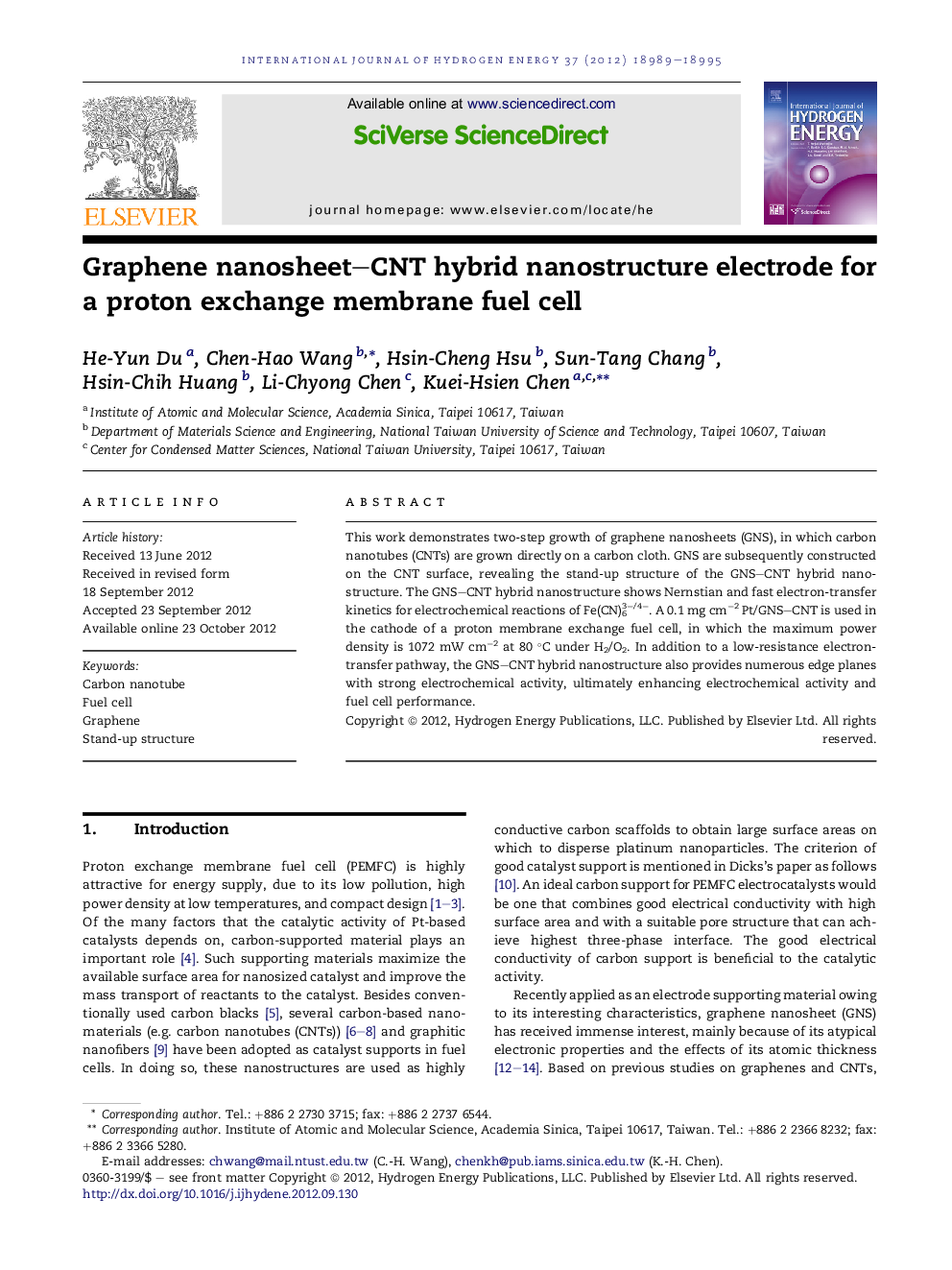| Article ID | Journal | Published Year | Pages | File Type |
|---|---|---|---|---|
| 1276105 | International Journal of Hydrogen Energy | 2012 | 7 Pages |
This work demonstrates two-step growth of graphene nanosheets (GNS), in which carbon nanotubes (CNTs) are grown directly on a carbon cloth. GNS are subsequently constructed on the CNT surface, revealing the stand-up structure of the GNS–CNT hybrid nanostructure. The GNS–CNT hybrid nanostructure shows Nernstian and fast electron-transfer kinetics for electrochemical reactions of Fe(CN)63−/4−. A 0.1 mg cm−2 Pt/GNS–CNT is used in the cathode of a proton membrane exchange fuel cell, in which the maximum power density is 1072 mW cm−2 at 80 °C under H2/O2. In addition to a low-resistance electron-transfer pathway, the GNS–CNT hybrid nanostructure also provides numerous edge planes with strong electrochemical activity, ultimately enhancing electrochemical activity and fuel cell performance.
Graphical abstractThe stand-up structure of GNS–CNT provides not only a low-resistant electron-transfer pathway but also numerous edge planes with strong electrochemical activity, enhancing fuel cell performance.Figure optionsDownload full-size imageDownload as PowerPoint slideHighlights► The stand-up structure of GNS–CNT is a good candidate for catalyst support. ► GNS–CNT electrode is a low-resistant pathway for electron transfer. ► GNS–CNT has many edge planes as the high electrochemical active sites. ► Pt/GNS–CNT has high ECSA which is attributed to uniform dispersion of Pt NPs.
